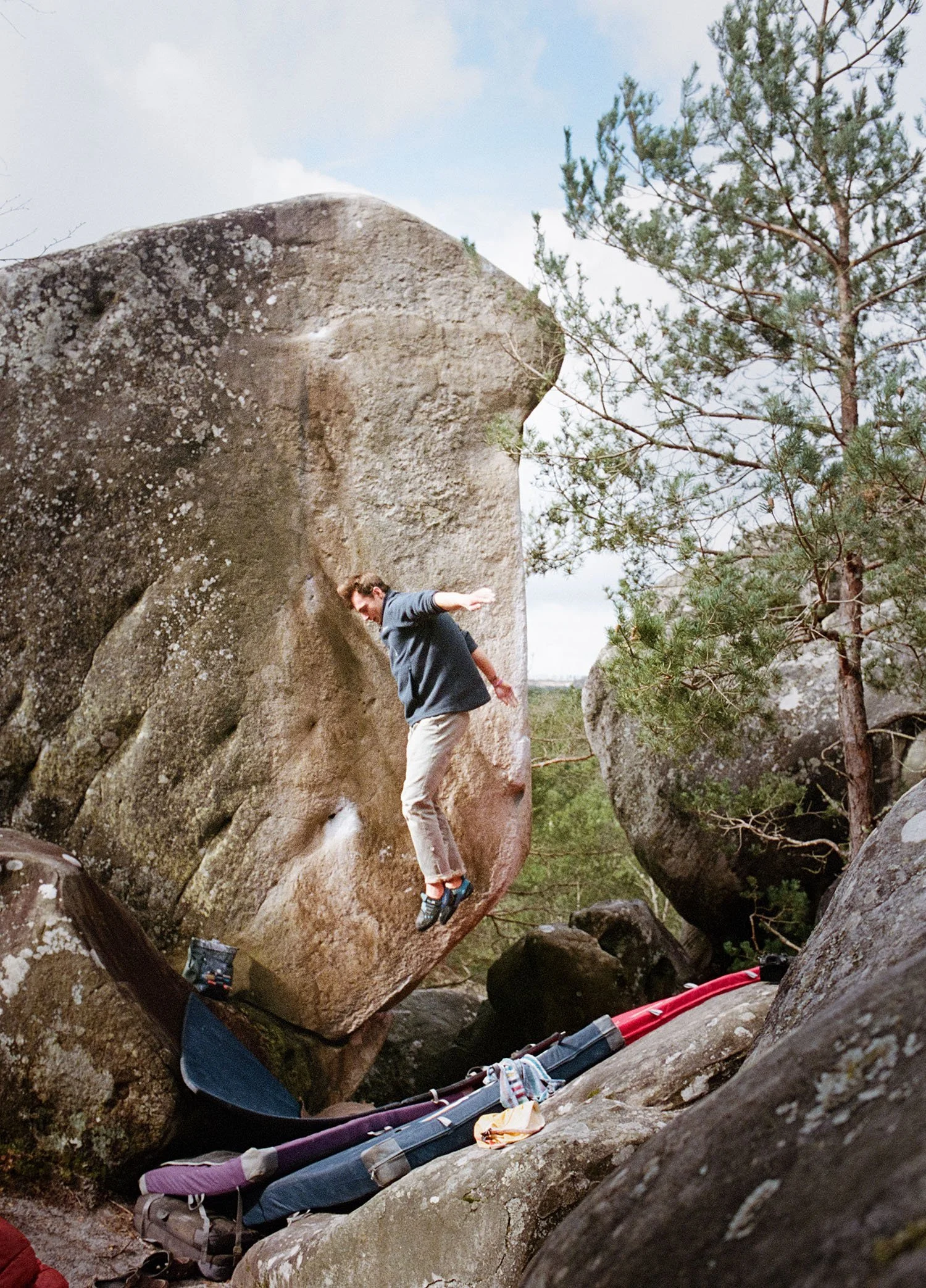The Psychology of Projecting: How to Stay Motivated When You’re Not Sending
If you’ve ever had a tough enough boulder project, you’ll understand the frustration of not sending. Knowing you’re close, and it’s possible, only to not be able to get the thing over the line. Seeing positive progress only to take two steps backward and be unable to repeat moves. It’s pretty hard to enjoy the process when the process is not climbing the boulder. Frustration sets in, doubt creeps in, and suddenly it’s easier just to walk away and stop. But obviously you don’t, you keep going and dig yourself into an even deeper pit of frustration and confusion. So what can you do to stay motivated while trying something at your limit? How can you make the process as enjoyable as possible, and still give yourself the best chance to succeed? Let’s try and dig into it.
The Key that Unlocks the Door
So many times you hear people say, focus on the process and not the outcome. It’s one of the biggest cliches there is not just in bouldering, but sport and life in general. But the issue is, it’s a fact. I can recall so many occasions where I’d taken all pressure off myself, and essentially let go of the project, only to do it. The most enjoyable projecting experiences I’ve had have been without the pressures and stresses of doing it in the first place. But practicing this process of focussing on the process, is harder than it appears.
Firstly, it’s about looking at the landscape of the boulder, and asking yourself what the reason is for putting pressure on? If you’re working on a project close to home, what is the pressure and frustration really achieving? You can invent all the reasons you want that you need to get the project done by X time, but ultimately it’s not going anywhere, and it’s something you can access regularly. So avoid feeling the time pressure. Remind yourself constantly that the session you’re about to have is an opportunity to push yourself, learn something about the boulder and have a good workout! Re-frame the session from ‘time to send’, to ‘lets try and make some progress in an area and have some quality goes’. Once you can access those quality goes, the send often comes. But when you’re crippled by performance anxiety in the session, it’s impossible to unlock even half of your true potential.
So what is the process, and how do you focus on it? Well even when a project is fully refined and I’m giving send burns, I’m still looking at the minutiae of the boulder. I’m still micro scoping footholds and handholds, looking for a subtle position change, or looking at my pace and trying to cut a few seconds or moves off the sequence. That’s a constant process, and one that keeps you learning. I’ve climbed on boulder problems at my local crag for 15 years now, and I still learn subtle things about them that make them easier for me today. That process never stops. As you evolve as a climber, your skillset evolves and new options become available. What was the best method before, might not be the best now.
Keeping yourself open to the learning opportunities that a hard project offers is not only a surefire way to complete it, but also sharpen your skills for other projects. When you feel that performance anxiety creeping, get deeper into the nuance of the boulder.
Checklist
One of the best tools I’ve found for projecting is to have a micro-goals checklist for each session. These could be goals such as certain links, repeating a move X number of times, or finding a slight refinement to a foot move. If you can create a checklist that keeps you focussed during the session, your mind is less likely to wander, and suddenly the process is first, not the outcome.
I’ll write aims and objectives for any project that I expect to take me more than a couple of sessions, and use it to not only give structure to the session, but to track progress and assess whether the boulder is suitable for me to be trying. If no goals are ticked during a session, I either didn’t set enough, set them too high, or the boulder is simply too difficult. When you’re having moments of despair, check back to your checklist and see your progress from early sessions. Remind yourself when you were making 1 or 2 move links. See how far you’ve come, and look for those next little bits of progress, not just an end to the process.
Psychologically, there are many more mindsets which will play their part in maintaining motivation when trying a project, but these will be better looked at in a video or later blog. But safe to say, every percentage you can gain is worth the effort to gain.
Until the next project,
Eliot.

